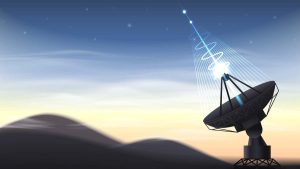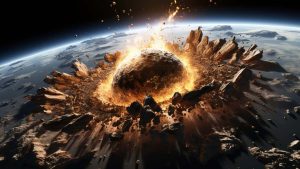We’ve all seen the movies. A giant rock falls from the sky, hits Earth, and life as we know it ends in a dramatic fireball. But what would actually happen if a medium-sized asteroid impact became reality? Not something the size of a planet killer—but something around 500 meters across, like asteroid Bennu, which NASA has been keeping an eye on. Well, science now has some answers—and they’re both chilling and surprising.
Researchers at the IBS Center for Climate Physics in South Korea used supercomputers to simulate what would happen if a space rock that size hit our planet. The short version? We’d plunge into an “impact winter,” global temperatures would fall by about 4°C (or 7.2°F), and rain would become a lot more scarce. But oddly enough, some life in the ocean might not just survive—it might boom.
The danger is real (but not exactly imminent)
There are thousands of near-Earth objects floating out there in the solar system. Most are harmless. Some—like asteroid Bennu—have a small chance of colliding with Earth. In fact, scientists say there’s about a 1 in 2,700 chance it could hit us in the year 2182. That’s roughly the odds of flipping 11 heads in a row. So… not panic-worthy, but not zero either.
So what would happen if one of these hit the planet? Researchers used advanced climate modeling to explore just that. They didn’t crash any real rocks, of course. Instead, they created detailed computer simulations showing how Earth’s atmosphere, land, and oceans would react to a direct hit.
Dust clouds, dark skies, and a frozen planet
First off, the impact would throw up an insane amount of dust—hundreds of millions of tons of it. This dust would shoot into the upper atmosphere, where it could block out sunlight for years. In the simulations, this led to a dramatic drop in global temperatures—up to 4°C colder than usual. Rainfall also dropped by about 15%, and the ozone layer took a hit, with up to 32% ozone depletion globally. Some regions would feel the effects even worse.
“The sudden cold snap, or ‘impact winter,’ would make it really hard for plants to grow,” said Dr. Lan Dai, lead author of the study. And less plant growth means less food—both for us and for animals. The simulations showed a 20–30% drop in photosynthesis in both forests and oceans. In plain English: not a good time to be depending on crops or clean air.
The ocean’s odd reaction: a burst of life
Here’s where things take a strange turn. While land-based plants struggled, ocean life—especially plankton—bounced back faster than anyone expected. In fact, within just six months of the impact, plankton levels not only recovered but actually shot up higher than normal. How? It all came down to what was in the dust.
Turns out that asteroid dust is rich in iron. And iron, believe it or not, is like fertilizer for certain ocean plants, especially in places where it’s normally in short supply—like the Southern Ocean or the eastern Pacific. The iron basically jump-started enormous algae blooms, particularly of a type called diatoms.
These diatoms didn’t just float around looking pretty. They became dinner for zooplankton—tiny sea creatures that are an important part of the marine food web. So while the land suffered, the sea turned into an all-you-can-eat buffet, at least temporarily.
Could the ocean save us in a crisis?
It’s a strange thought: while the skies darken and farmland fails, the ocean might actually become a source of hope. According to the scientists, this unexpected boost in marine life could help offset the damage caused by the drop in land-based food production. In other words, fish and other seafood could play a bigger role in global food security than we imagined—especially in the wake of an asteroid event.
“The excessive phytoplankton and zooplankton blooms might act as a lifeline,” said Dr. Dai. Not a total fix, but a vital cushion in an otherwise grim scenario.
Asteroid strikes may have shaped our evolution
According to the research team, Earth gets hit by a medium-sized asteroid roughly every 100,000 to 200,000 years. Which means our early ancestors—those living long before cities and smartphones—may have lived through one of these events. Could it have pushed them to adapt, migrate, or change in some way?
Professor Axel Timmermann, co-author of the study, thinks so. He suggests these asteroid winters could have left a mark on human evolution, even influencing our genes and behavior. It’s a theory that adds a whole new layer to our prehistoric history.
So what’s next for this research?
The team isn’t stopping here. Next, they plan to use something called “agent-based modeling” to simulate how early humans might have responded to these global shocks. These models treat each person as an individual—complete with needs, habits, and survival strategies. The idea? To see how communities might have moved, hunted, or even fought for survival in the face of disaster.
“It’s about learning from the past to better understand our future,” said Timmermann. And given the ongoing concerns about space rocks and planetary defense, it seems like a timely pursuit.
A reminder from the cosmos
So, what can we take away from all this? That even a mid-size asteroid could do major damage—not just at the point of impact, but across the whole planet. And yet, even in the darkest moments, life finds a way. Maybe not on land right away, but in the ocean? Absolutely.
It’s a humbling reminder that we’re part of a much larger system—one that’s resilient, unpredictable, and more interconnected than we think. And if a rock from space ever does come our way, let’s just hope we’re ready—both above and below the surface.



